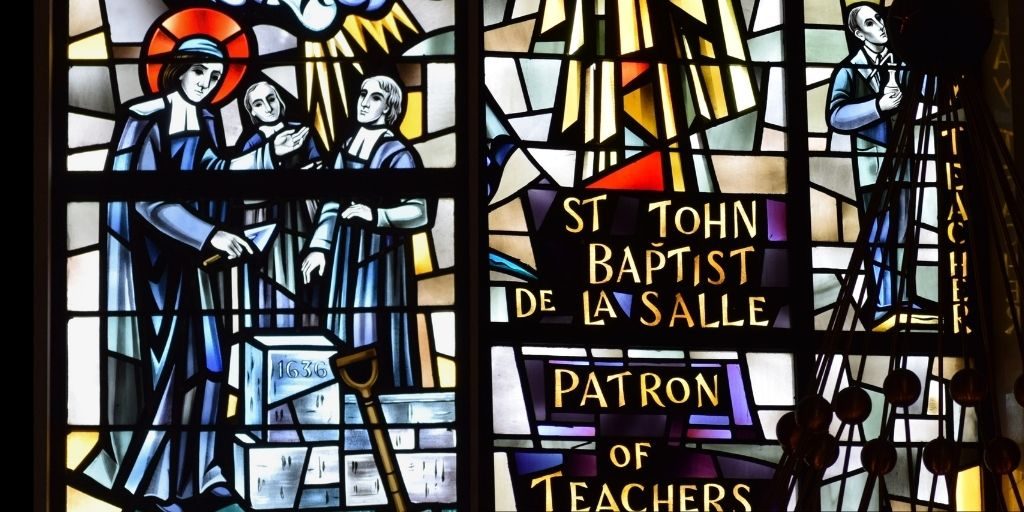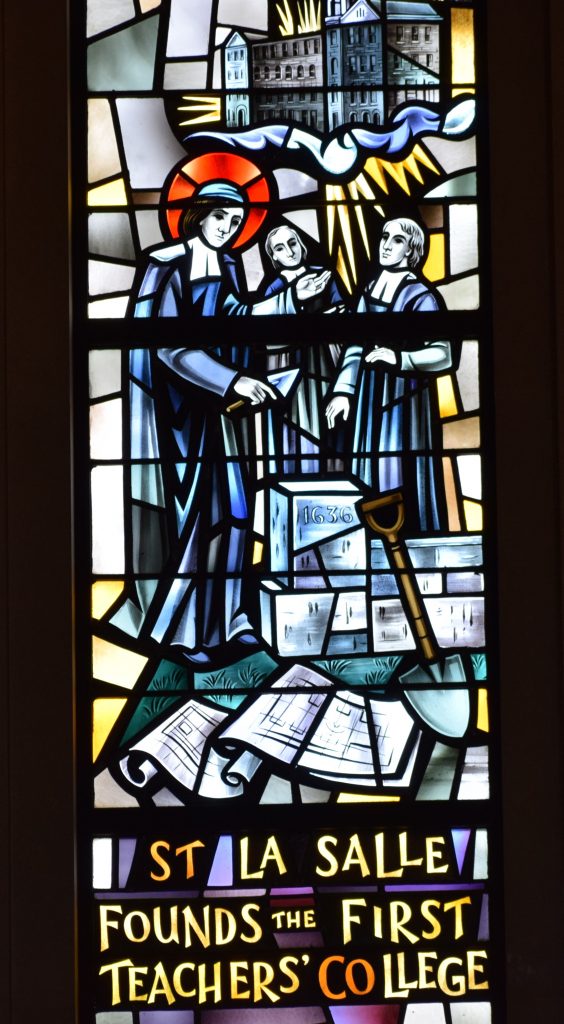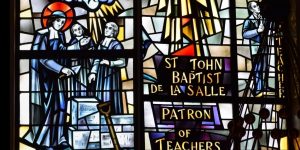
 Jean-Baptiste de La Salle was the last person anyone would have expected to become a leader of educational reform; he himself was never an exceptional student, and his family never supported his passion for education and charity. Yet his life is proof of how God works in mysterious ways and how his “power is made perfect in weakness,” (2 Corinthians 12:9). As we celebrate the Feast of St. Jean-Baptiste de La Salle on April 7, we invite you to learn more about his path from unexceptional student to cutting-edge educational leader.
Jean-Baptiste de La Salle was the last person anyone would have expected to become a leader of educational reform; he himself was never an exceptional student, and his family never supported his passion for education and charity. Yet his life is proof of how God works in mysterious ways and how his “power is made perfect in weakness,” (2 Corinthians 12:9). As we celebrate the Feast of St. Jean-Baptiste de La Salle on April 7, we invite you to learn more about his path from unexceptional student to cutting-edge educational leader.
Jean-Baptiste Begins His Educational Work
Jean-Baptiste de La Salle was born in 1651 in France. When he was enrolled at seminary in Paris in 1679, Jean was asked to help start a school for the underprivileged in Reims, and he agreed, thinking he was simply taking on an administrative role.
The school in Reims became immensely popular, and soon, Jean realized that additional resources would be needed. He decided to open his own home as a training center for teachers and a refuge for the poor, all while he himself taught the students. Unfortunately, Jean’s family never approved of his work, but that didn’t stop him from expanding his efforts and becoming wildly successful. The “Brothers of the Christian Schools” were soon known for their exceptionality. By 1717, in addition to their boy’s schools, including a reformatory school, the Brothers of the Christian Schools had established a teacher training program and an educational program for adult prisoners.
 Jean-Baptiste’s Advanced Teaching Methods
Jean-Baptiste’s Advanced Teaching Methods
Jean was ahead of his time in his educational methods: he would teach the students in vernacular languages instead of Latin, which was standard at the time; he put students in classrooms together for each subject, instead of giving individual instruction; and finally, he required silence in the classroom.
But perhaps most importantly, Jean’s methods were all guided by an underlying commitment to reflecting Christ as a teacher, as John Paul II has noted:
“De La Salle’s ascetical and educational thought did not focus so much on ‘how to educate’ as on ‘how to be’ in order to educate, in other words, on how to interiorize the educator’s vocation and method. His model is Christ, who is Teacher because he is able to listen, example because he is a witness. De La Salle aims at educating young people through the renewal of the educator. If the educator does not give the young person an example with his own witness and words, the school does not accomplish its purpose.”
Nowhere is this commitment more evident than in Jean’s remarks about Christian ambassadorship, as he once said:
“You are ambassadors and ministers of Christ in the profession that you exercise; you must therefore conduct yourselves as representatives of Christ himself. It is he who wants young people to look to you as to himself, to receive your teaching as if he himself were teaching. They must be convinced that it is the truth of Christ that you speak, that it is in his name you teach them and that it is he himself who gives you authority over them”
Though he gave up his position as the head of the Christian Brothers in 1717, he continued to serve as a brother until his death at age 68. He is portrayed in the Basilica in the northeast nave clerestory window, and is the patron of teachers.
Sources:
“Address of John Paul II to the Brother of the Christian Schools,” John Paul II, the Vatican.
Butler’s Lives of Saints, ed. Bernard Bangley
The Way of Saints, Dr. Tom Cowan
The Basilica Guidebook, Dr. Geraldine Rohling

